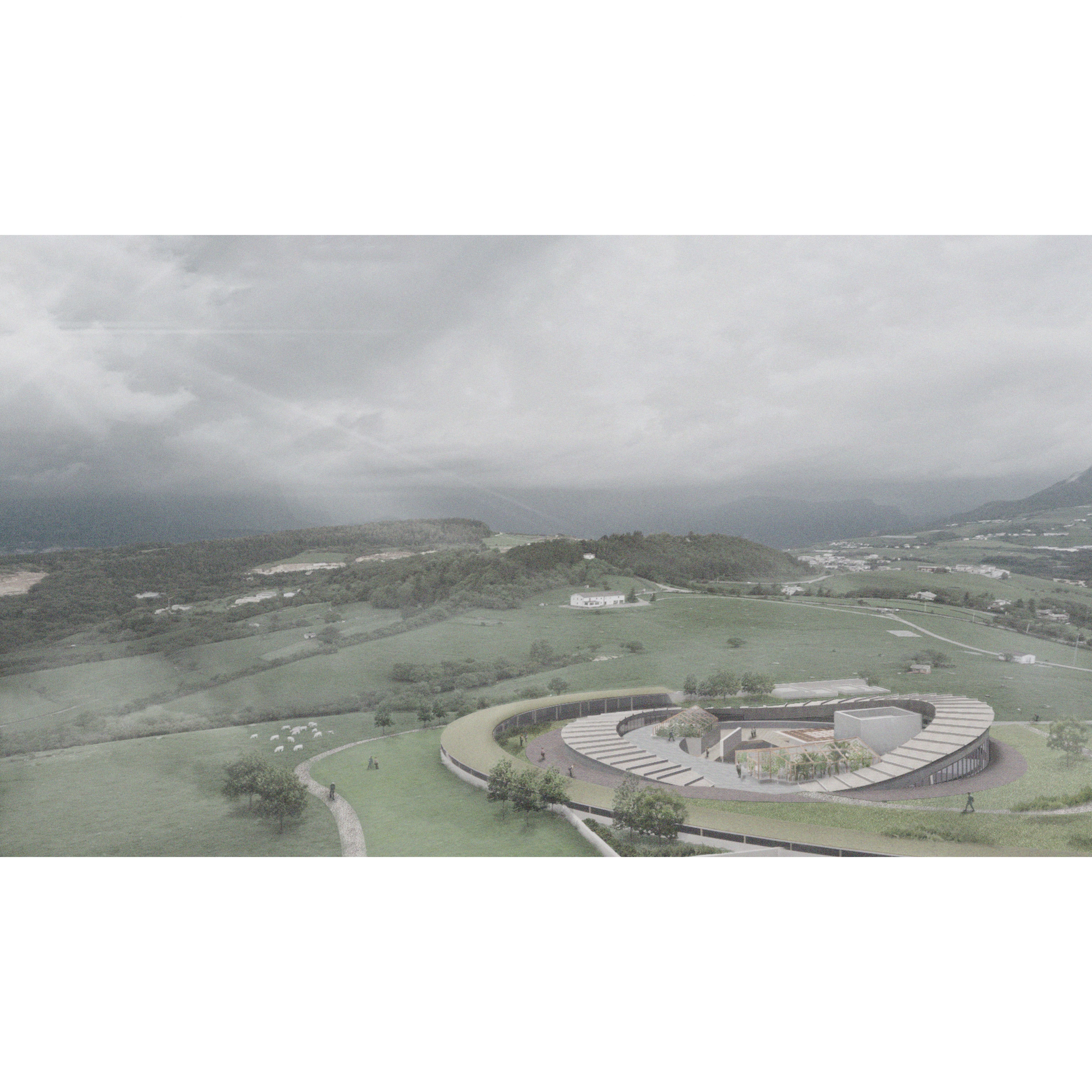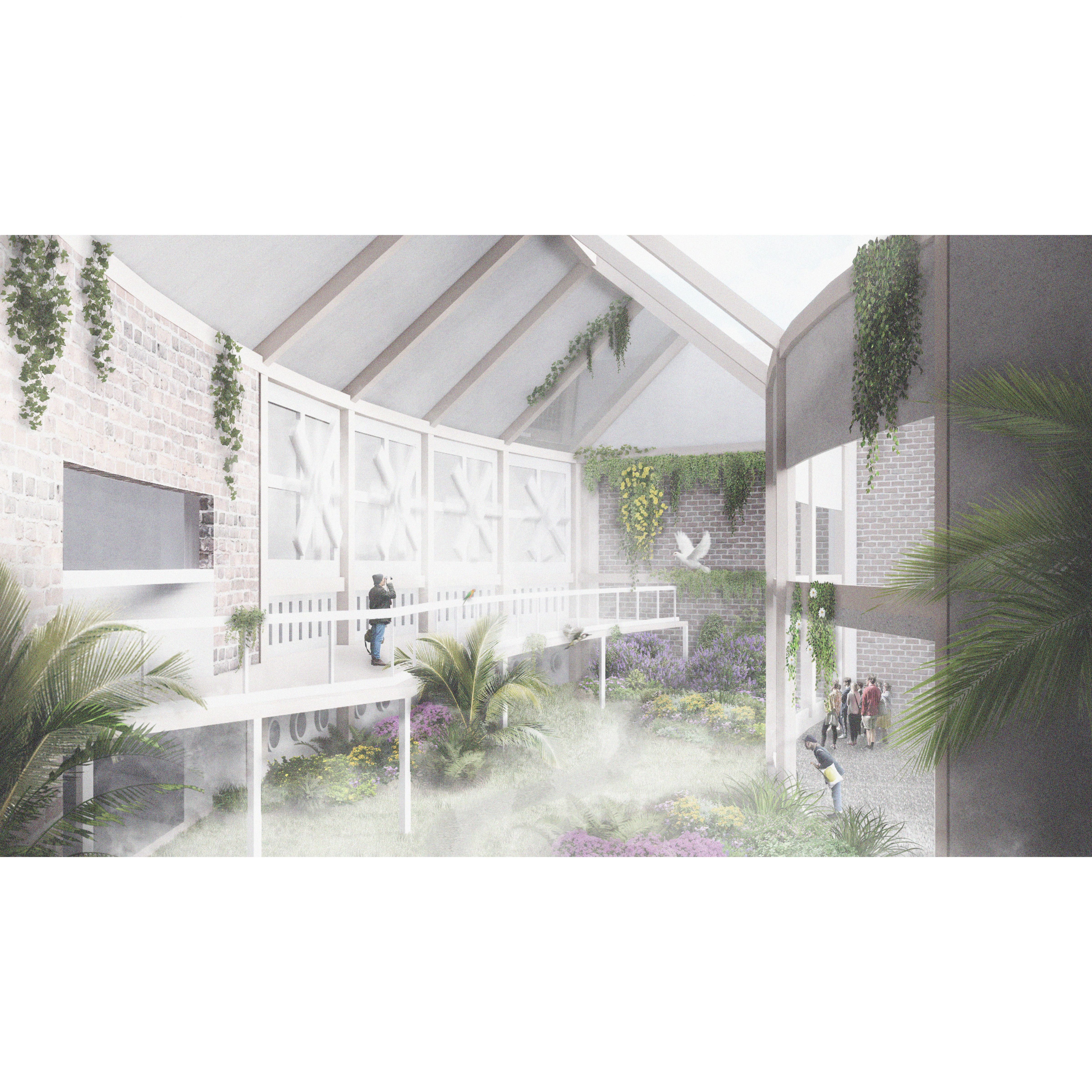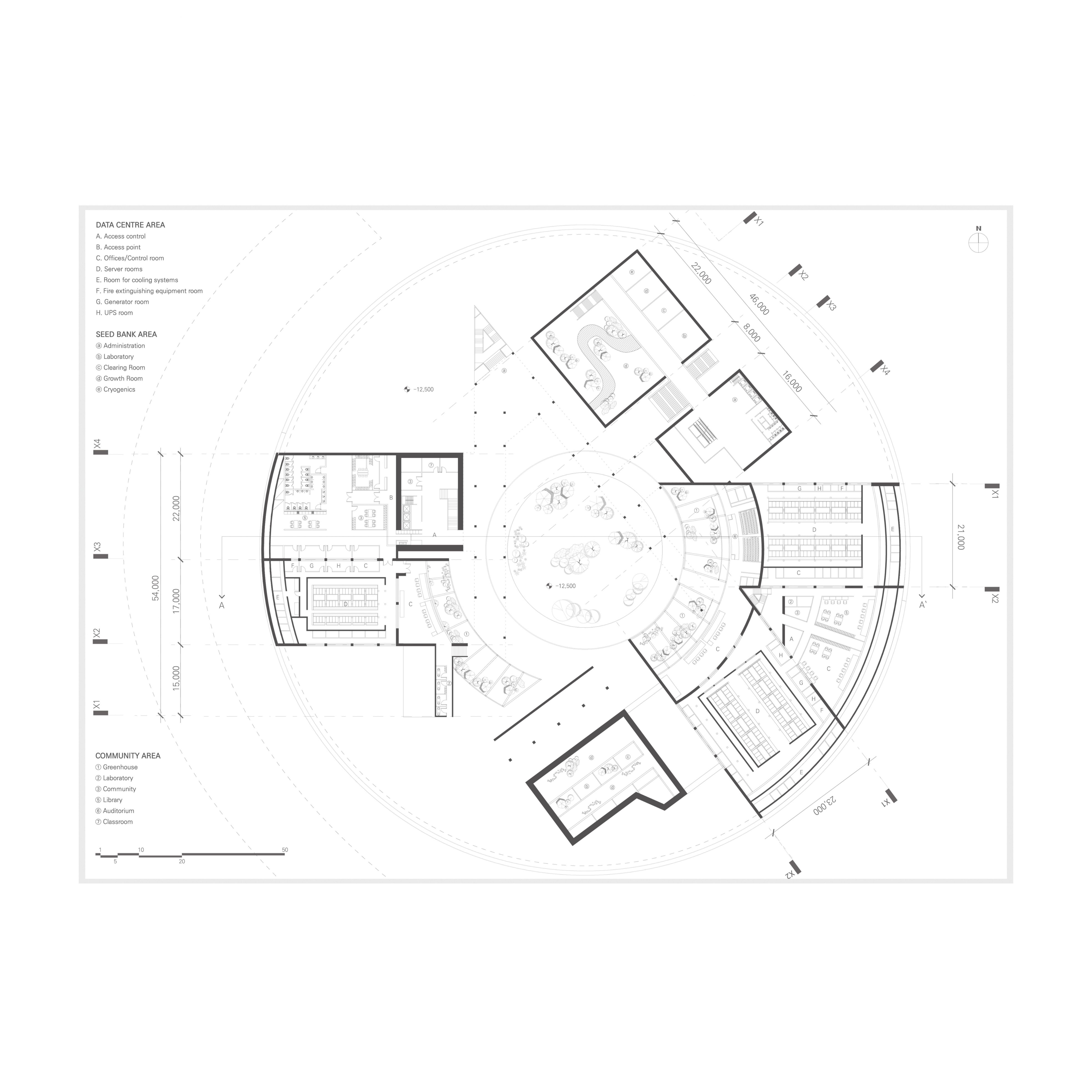Young Architects Competition Data Landscape Honorable Mention 수상
Yonsei Architecture Research & Design (YARD) - CAT김형석, DSL유솔아, ADL임현섭, OPL유지인 연구원
<주최>
Young Architects Competition
DATA WITH SEED
Today’s information is stored as ‘data’, whereas the memory of the past rests in nature as seeds. This project aims to connect the ‘seeds’ as the remains of the past and ‘data’ of the present day. The data center is no longer characterized as a mere facility for server maintenance, but functions as a medium to operate the seed bank.
SITE
The site was isolated from nearby areas by a hill and the military facilities were buried underground, deteriorating their accessibility. A new corridor was constructed to create a new flow on the hill, constituting new spaces on the hill and connecting the nearby areas. A triangular bridge connects the three military buildings to generate a flow circulating within the site. As the passageway rotates around the central corridor surrounding the space, activities in the inner data centers and seed bank laboratories come into sight; but the peripheral and inner flows remain strictly divided.
DATA CENTER
Data centers are facilities with numerous machinery to store ‘data’. Considering the amount of heat and noise generated by the equipment, maintaining a constant interior environment is crucial. This project proposes utilizing the wind coming from the corridor. Cold air from outside flows into the supply plenum and is spread along the slope of the building towards the central server room. Hot air generated in the server room flows to the greenhouse of the seed bank for reuse.
SEED BANK
The seed bank is a facility conducting research on the growth of plants. Consequently, carefully controlling various conditions including temperature and humidity is vital. It is possible to adjust the temperature by regulating hot air coming from the servers, allowing the researchers to manipulate the interior environment according to their needs. The seed bank also shares community spaces with the data center, instead of operating individually. A larger community is formed by coexisting in public spaces such as restaurants, libraries, and conference rooms.


